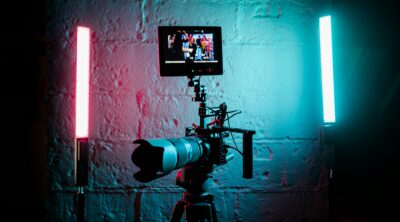< Back to all posts
Digital Signage Best Practices for the Enterprise
Digital signage is just about everywhere. And, much like accessing content on your mobile devices anytime, anywhere, you expect to see digital signage displays wherever you are, wherever you go. They are embraced as a complementary, and in some cases, expected, means of attaining information and guidance, to the mobile devices we so heavily rely on.
Digital signage systems display content of all kinds, from revenue generating advertisements and promotions to news, information, and entertainment to corporate communications.
This best practices approach and guidelines outlined in this report are to help enterprise organizations select, implement and manage a digital signage network to inform, educate and entertain employees, customers, and guests. This includes companies, government departments and agencies, associations, and universities that are implementing digital signage throughout their facilities and across campuses.
Digital signage is embraced by the enterprise community as a near mission critical means to communicate. As stated, display screens are virtually everywhere: in retail stores and branch offices; in office lobbies, common areas, break rooms, and hallways; and outdoors to welcome visitors and provide wayfinding guidance. Executives and institutional leaders recognize the need to communicate to employees, students, and guests. Department heads and establishment members want to provide and/or contribute content – employee/user generated content (see Everyone is a Producer). Facility departments are mounting flat screens as if they’re wall hangings (which they are) and installing freestanding fixtures and kiosks as if they’re furniture. The cost for display screens, digital signage solutions, and distribution capabilities is very affordable. That’s the good news.
The bad news is that many enterprise digital signage systems are only moderately successful, at best. Digital signage solutions are typically chosen by organizations through a rigorous and time-consuming solution selection process. Then, they are launched with great fanfare and high expectations. Soon after implementation, many organizations experience technical issues and operational challenges as well as a tepid acceptance of the content. Simply stated, the organizations likely focused on technology and the ‘wow’ factor and overlooked the need to consider the targeted viewers, resources required to create and provide the content, and the need to track viewer interests and messaging outcomes.
Luckily, there are a number of organizations that have successfully implemented digital signage systems that contribute to the foundation for best practice guidelines. In many ways, they are similar to best practices for proprietary video and interactive distance learning networks, webcast services and corporate websites. Where the key objectives include making content relevant, timely, appealing, and readily available and easily accessible for all prospective viewers; implementing a system that is user-friendly, easy to update and manage content distribution; and features a service agreement that ensures the system is well-maintained and remains operationally functional.
Best Practices – Begins with the Media Business Strategy
The following best practice approach and guidelines can apply to any organization for the selection, implementation, and management of an enterprise-wide digital signage solution.
The first, and most critical, step is to conduct a thorough Media Business Strategy. The objectives are to identify the targeted viewers (both internal and external); identify the desired viewing environments and display screen locations; understand the messaging and content sources; and assess the existing system capabilities for content creation, distribution, and management. A key component of the Media Business Strategy is to develop the Content Strategy, which includes identifying the resources necessary to create content or acquire and manage content from third-party sources.
The next step is to establish the Technology Roadmap, which includes a high-level configuration of the number of display screens and types; operational capabilities; and system requirements to complement and interface with existing production and network systems.

A digital signage strategy needs to fit together perfectly.
Media Business Strategy
Media business strategies can vary widely, primarily based on the industry or type of organization and the audiences they need to reach. For example, retail companies, financial institutions, and government agencies like the United State Post Service and Social Security Administration need to program content for their customers as well as their employees. Manufacturing companies, associations and US Defense Department Services and agencies are mostly concerned with internal communications. Colleges and universities need to provide content to faculty, and students as well as guests.
The following are key best practice requirements to address when developing a Media Business Strategy:
1. Identify all target audiences you need to reach, inclusive of:
-Customers.
-Employees.
-Students, faculty, and staff.
-Guests.
2. Determine when and where you need to reach them:
-Lobbies and common and high-traffic areas such as hallways and near elevators.
-Retail areas such as merchandise and service counters, end caps and checkout lanes.
-Office spaces and break rooms.
-Cafeterias and food service areas.
-Athletic departments and sports complexes.
-Dormitories and housing facilities.
-Outdoors for wayfinding guidance.
3. Identify the content, message(s) you want them to see.
4. Identify all content sources and content types:
-Live and on-demand content.
-Video vs. rich media or text.
-Third-party content.
5. Develop the content strategy.
6. Allocate staff resources.
It is critical to leverage the digital signage solution to increase and expand digital touch points, by integrating and supplementing content across all digital media devices and driving viewer engagement.
There are three key recommendations: First, think marketing when developing the media business strategy. You are essentially doing everything the marketing group does when it develops the strategies to advertise, market and promote products and services to external customers. Second, establish a governance committee to develop digital signage guidelines; conduct a marketing and training program to ensure all key stakeholders understand how to leverage the system; monitor usage; and track feedback. Third, make sure that all key stakeholders, from content contributors to functional support groups, are included and on the same page about the goals and expectations.
Content Strategy
One of the most common oversights when implementing a digital signage solution is the failure to fully develop a content strategy prior to the installation of the system. The content should meet the needs of the targeted viewers identified in the Media Business Strategy. Also, content elements need to factor in considerations for the environment in which the screen(s) resides, e.g.: in areas where viewers are moving, the content needs to be brief and concise; but in areas where the viewers are stationary for periods of time, the content can be as long as 10 to 20 seconds.
Here are some key best practices:
-Ensure that your content is relevant and fresh, visually appealing, engaging, and easily accessible.
-Keep messages short and sweet.
-Ensure there is a consistency of content across screens throughout the network.
-Ensure the institutional and departmental templates and brand are accurately represented.
-Differentiate programming for institutional and departmental screens.
-Use all media by finding the right mix.
-Leverage content across all viable audiences.
-Leverage interactive capabilities.
-Include emergency and critical notification capabilities with automatic screen overrides and an integrated mobile messaging system.
-Identify the best zone configuration for each screen and target audience and include zones for key content types and sources: brand identifier, video (or main message area), and social media.
-Be prepared to Feed the Beast – with newly created and acquired content.
It is critical to have buy-in and support from the departments responsible for providing content and the resources to create and manage the content. It is not acceptable for content to be stale and on-screen following its useful end of life. Leverage the digital signage system to direct viewers to other viable display systems and channels where detailed information is available.

Putting together great content takes a lot of time and effort.Technology Roadmap
Once the Media Business and Content Strategies have been completed, best practice organizations should have a clear understanding of their existing systems, infrastructure, functional capabilities and workflow. The expectation is that the organization knows what it has and what it needs to do. The challenge is to then look to the marketplace to find the right digital signage solution and vendor(s) to meet their specific needs by complementing the existing capabilities with additional and enhanced functionality. Key functional, operational and technology considerations include:
-User-friendly media creation, ingest, and management capabilities.
-Complementary media distribution channels such as broadcast, segmented (grouping and tiering), and local contribution (USB sticks).
-Interactive touch screens.
-Media players where appropriate to manage local display of content.
-Leveraging personal devices to view and interact with digital signage.
-Deploy screens against a manageable, phased timeline.
-Integration with other organizational initiatives.
-Automated systems and workflows.
-Leveraging the entire video ecosystem.
Don’t let technology drive the selection of a digital signage solution. Acquire and implement the solution best suited to meet your business requirements, e.g.: As identified through the Media Business Strategy process and to support the Content Strategy. Leverage vendor expertise, resources and contract vehicles to manage and maintain the system. This may include managed services, for the development and management of content as well as the operation of the system.
Finally, it is important to clearly identify the roles and responsibilities of key stakeholders.
In Summary
Digital signage can be an effective and efficient way to enhance the corporate brand, improve employee morale and performance, improve the customer experience and generate revenue.
To ensure a successful digital signage solution is implemented throughout your organization, follow the best practice guidelines and process used by other leading organizations. Know your audience, existing systems, capabilities, workflows, and gaps. Identify the message(s), content contributors,and roles and responsibilities of key stakeholders. Select the right solution and vendor to meet your specific needs. Finally, make compelling content readily available and easily accessible – continuously and regularly.
If you need help making regular and readily available video content, Crews Control is here to help. Just click here for a free quote so we can help find you the perfect crew for all of your video needs!







I like that you pointed out that it is important to not let technology control or drive your signage. It is you who is in charge, and I think that it is super important to keep it that way. I am looking for someone to put a digital sign on my truck, but I don’t know where to begin.
Digital signage seems to be everywhere in every business. As there are various benefits of using digital signage in every business. Keep sharing more information it really helpful.